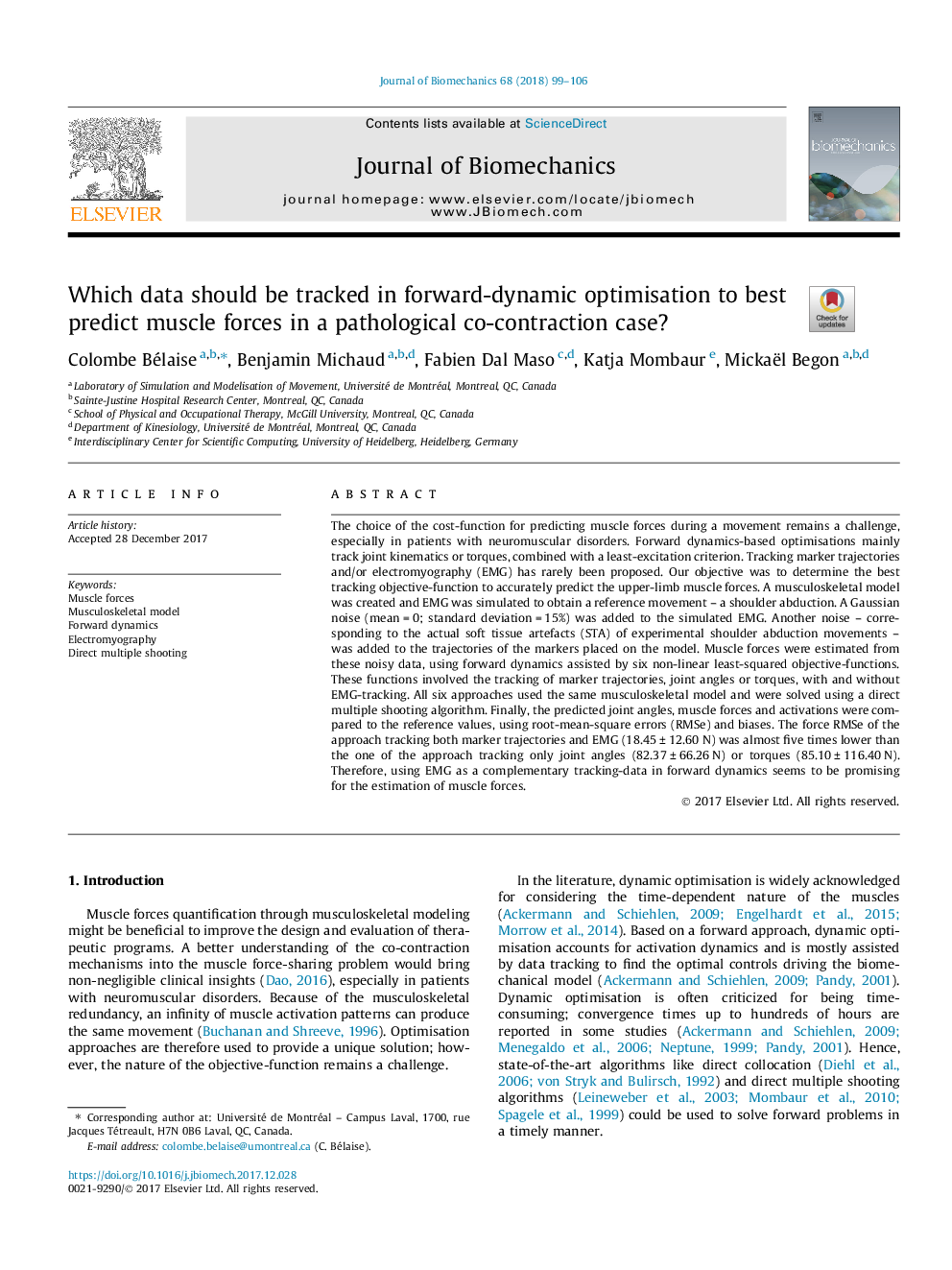| Article ID | Journal | Published Year | Pages | File Type |
|---|---|---|---|---|
| 7236673 | Journal of Biomechanics | 2018 | 8 Pages |
Abstract
The choice of the cost-function for predicting muscle forces during a movement remains a challenge, especially in patients with neuromuscular disorders. Forward dynamics-based optimisations mainly track joint kinematics or torques, combined with a least-excitation criterion. Tracking marker trajectories and/or electromyography (EMG) has rarely been proposed. Our objective was to determine the best tracking objective-function to accurately predict the upper-limb muscle forces. A musculoskeletal model was created and EMG was simulated to obtain a reference movement - a shoulder abduction. A Gaussian noise (meanâ¯=â¯0; standard deviationâ¯=â¯15%) was added to the simulated EMG. Another noise - corresponding to the actual soft tissue artefacts (STA) of experimental shoulder abduction movements - was added to the trajectories of the markers placed on the model. Muscle forces were estimated from these noisy data, using forward dynamics assisted by six non-linear least-squared objective-functions. These functions involved the tracking of marker trajectories, joint angles or torques, with and without EMG-tracking. All six approaches used the same musculoskeletal model and were solved using a direct multiple shooting algorithm. Finally, the predicted joint angles, muscle forces and activations were compared to the reference values, using root-mean-square errors (RMSe) and biases. The force RMSe of the approach tracking both marker trajectories and EMG (18.45â¯Â±â¯12.60â¯N) was almost five times lower than the one of the approach tracking only joint angles (82.37â¯Â±â¯66.26â¯N) or torques (85.10â¯Â±â¯116.40â¯N). Therefore, using EMG as a complementary tracking-data in forward dynamics seems to be promising for the estimation of muscle forces.
Related Topics
Physical Sciences and Engineering
Engineering
Biomedical Engineering
Authors
Colombe Bélaise, Benjamin Michaud, Fabien Dal Maso, Katja Mombaur, Mickaël Begon,
